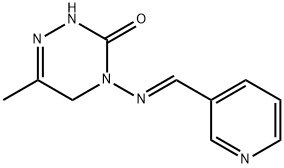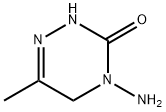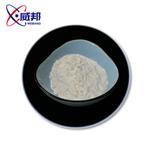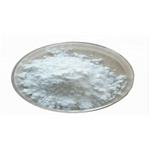Descriptioin
Pymetrozine is a new neuroactive insecticide. It has a remarkable selectivity for sucking insect pests, such as aphids, whiteflies, and plant hoppers, due to its systemic action. Pymetrozine is the only representative of the pyridine azomethines, a new class of insecticides. Pymetrozine has been determined to be of low acute toxicity to humans, birds, aquatic organisms, mammals, and bees. It is also not mutagenic.
Reference
[1] J. Ausborn, H. Wolf, W. Mader, H. Kayser, The insecticide pymetrozine selectively against affects chordotonal mechanoreceptors, Journal of Experimental Biology, 2005, vol. 208, pp. 4451-4466.
[2] D. Fuog, S. J. Fergusson, C. Flückiger, Pymetrozine: A Novel Insecticide Affecting Aphids and Whiteflies, Insecticides with Novel Modes of Action, 1998, ISBN 978-3-642-08314-3
[3] Yu, Jixin et al. “Acute Toxicity of an Emerging Insecticide Pymetrozine to Procambarus clarkii Associated with Rice-Crayfish Culture (RCIS).” International journal of environmental research and public health vol. 15,5 984. 14 May. 2018, doi:10.3390/ijerph15050984
Uses
Pymetrozine is a pyridine azomethine antifeedant. Pymetrozine is used as insecticide.
Definition
ChEBI: A member of the class of 1,2,4-triazines that is 4,5-dihydro-1,2,4-triazin-3(2H)-one substituted by a methyl group at position 6 and a (pyridin-3-ylmethylidene)amino group at position 4.
Mode of action
Pymetrozine, 6-methyl-4-[(E)-(pyridin-3-ylmethylene) amino]-4,5-dihydro-2H-[1-3]-triazin-3 one, is a pyridine azomethine compound, which represents an emerging insecticide for plant-sucking insects, such as aphids, whiteflies and plant hoppers. In addition, pymetrozine has been reported to have effects on neuro regulation or nerve-muscle interaction in sucking insects, thus preventing the insertion of their style into the plant tissue. It has been widely applied on rice and other crops in China as a substitute for organophosphorus pesticides since approximately 2006 and is rated as a Class 1 pesticide (i.e., harmless according to the International Organization for Biological and Integrated Control Scale). Pymetrozine affects the behaviour of homopterous insects and causes them to stop feeding, eventually leading to their death[3].







